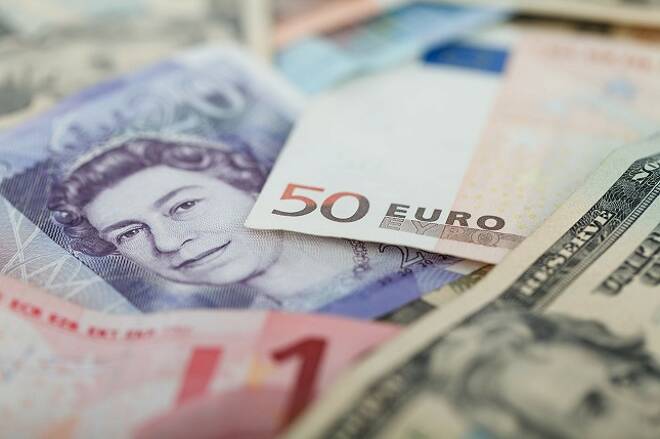Advertisement
Advertisement
EUR/USD Daily Technical Analysis for March 20, 2018
By:
The EUR/USD rebounded and closed up on the day, after initial dollar strength during European trading hours. The debate over guidance about quantitative
The EUR/USD rebounded and closed up on the day, after initial dollar strength during European trading hours. The debate over guidance about quantitative easing continues to drive markets, ahead of this week’s Federal Reserve meeting. Trader’s widely expect the Fed to increase interest rates by 25-basis points, but the path of the trajectory of future rate hikes remains in question.
Technicals
The EUR/USD moved higher running into short term resistance near the 10-day moving average at 1.2348. Support on the currency pair is seen near an upward sloping trend line that comes in near 1.2237. Prices remain rangebound and choppy but could experience a catalyst following the Fed’s decision on interest rates. Momentum, as reflected by the fast stochastic, is positive as the index generated a crossover buy signal. The MACD (moving average convergence divergence) histogram is printing in the red with a flat trajectory which reflects consolidation.
ECB focus shifting towards rate path
The ECB policy makers see the debate shifting from the guidance on QE and asset purchases to interest rates. Hardly a surprise, as there have been several official comments indicating that the guidance on rates, but also the stock of assets will become increasingly important as the ECB moves to phase out net asset purchases. It appears that the final decision on the end of QE will only come in July or July, given uncertainty about global trade, we see July as more likely at the moment. Executive Board member Praet suggested last week that markets quantify the “well-past” interval between the end of net asset purchases and the first rate increase as “up to next spring, adding that “once you stop net asset purchases the signaling aspect of the asset purchase program disappears and you therefore have to be much more precipice about the future path of short term rates”.
Eurozone trade surplus narrowed in January
Eurozone trade surplus narrowed in January amid strong import growth. The seasonally adjusted trade surplus narrowed to EUR 19.9 billion, from EUR 23.2 billion in the previous month. Exports contracted, while import rose over the month. The unadjusted surplus was EUR 3.3 billion, versus a deficit of EUR 1.4 billion in January last year, with import growth of 10.0% outstripping import growth of 7% year over year. Mixed numbers then, with the ongoing surplus, which is largely thanks to Germany adding to the critics of Germany’s large trade surplus, while the fact that import growth actually outstripped export growth at the start of the year will back those defending current policies. Furthermore, this is nominal data, which is impacted by both oil price and exchange rate developments and thus gives a somewhat distorted picture of real trends.
German finance minister “seriously worried”, that free trade is at risk. Scholz told Germany’s Bild that protectionism isn’t the answer to the problems of our time and stressed that trade will be a key item on the agenda of the G20 meeting. Meanwhile EU President Tusk has also put Trump’s tariff plans on the agenda of this week’s EU summit – further signs that a world trade war is looming on the horizon.
UK and EU make decisive step on a 21-month transition
UK and EU make “decisive step” on a 21-month transition, so said the EU’s chief Brexit negotiator Barnier, affirming earlier reports. He said that much of the treaty is now agreed, and that a backstop solution on the Northern Irish border must be part of the Brexit treaty. The news has prompted a fresh bout of sterling buying, and the currency is now showing a 1% gain on the dollar on the day so far. The EU has reportedly agreed on the terms of transition deal with the UK, corroborated by a UK government. This would allow the UK to remain in the customs union and the single market through to the end of 2020, and formally existing the union on 29th March 2019. The UK will cede voting rights during the period while continuing to observe EU rules and laws. The extended time would give a more realistic timeframe to hammer out a new trading deal with the EU, so positive new on this front tends to give sterling, which has been trading at about a 15% trade-weighted discount versus levels prevailing ahead of the vote to leave the EU in 2016, a boost.
About the Author
David Beckerauthor
David Becker focuses his attention on various consulting and portfolio management activities at Fortuity LLC, where he currently provides oversight for a multimillion-dollar portfolio consisting of commodities, debt, equities, real estate, and more.
Advertisement
